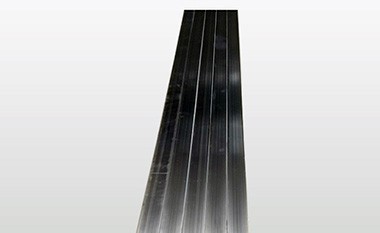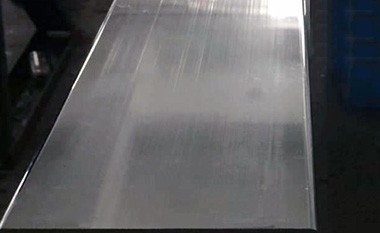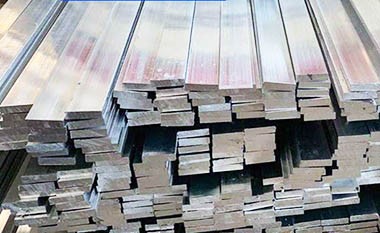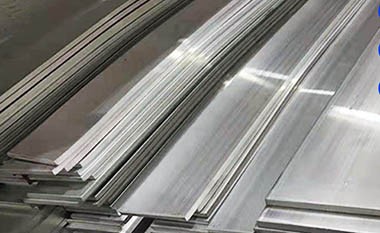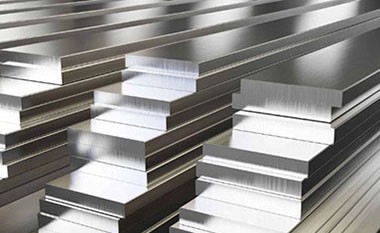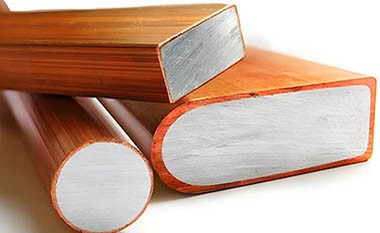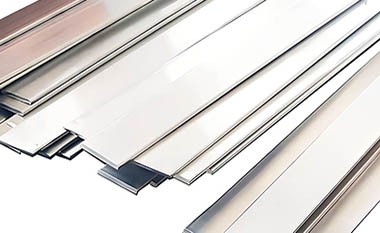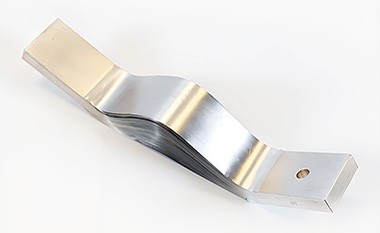Aluminum Tubular Busbar
Aluminum Tubular Busbar is a hollow cylindrical conductor used in power distribution systems for efficient high-current transmission. Compared to traditional solid busbars, its tubular design offers several advantages, including lightweight, high mechanical strength, and excellent heat dissipation.
Made from aluminum alloys, the Aluminum Tubular Busbar strikes a balance between conductivity, weight reduction, and mechanical strength, making it an ideal choice for industrial and infrastructure applications.
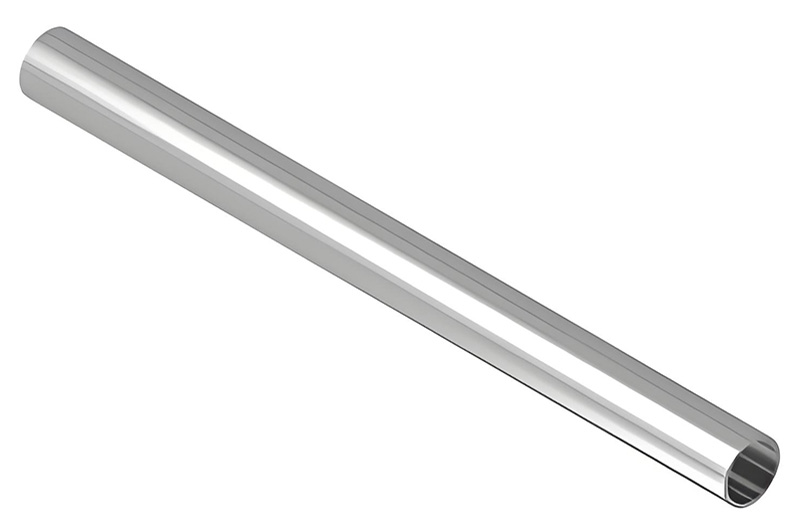
HC Aluminum is a leading manufacturer and supplier of Aluminum Tubular Busbar. The Aluminum Tubular Busbar Products include common alloy series such as 6061, 6063, 6101, 1350, 1060, 1070, etc., with strong conductivity, good corrosion resistance, and anodized treatment for various outdoor environments.
Aluminum Tubular Busbar Specifications
| Item | Specification |
| Alloy | 6061, 6063, 6101, 1350, 1060, 1070 |
| Outer Diameter | 3-250 mm |
| Wall Thickness | 1-15 mm |
| Length | 100-18000 mm |
| Standards and Certifications | IEC 61439, IEEE 837, ASTM B241 |
| Electrical and Mechanical Performance | Short-circuit withstand, current capacity (amperage), thermal cycling test |
| Busbar Type | Seamless tube, straight tube body, smooth and flat surface, free of cracks, wrinkles, twists, and other defects |
| Advantages | Lightweight, large cross-sectional area, strong load capacity, easy installation |
This tubular busbar is suitable for power distribution systems and can efficiently carry higher currents. Due to its seamless design, the smooth and flat surface reduces electrical contact impedance.
Aluminum Tubular Busbar Structure
- Material: Typically made from aluminum alloys (e.g., 6061 or 6063), offering optimal strength, corrosion resistance, and extrudability.
- Design: The hollow tubular structure reduces weight while maintaining structural integrity. The geometry increases surface area, improving heat dissipation.
Aluminum Tubular Busbar Features
- Material Composition: Typically made from high-purity aluminum alloys such as 1060, 1070, 6061, or 6063. These alloys are selected for their excellent conductivity, corrosion resistance, and mechanical strength.
- Design and Dimensions: The busbar is hollow with a smooth, even surface. Common sizes include outer diameters from 60 mm to 450 mm, wall thicknesses from 3 mm to 15 mm. Lengths can extend up to 15 meters for long-span installations.
- Electrical Characteristics: Aluminum tubular busbars have a lower skin effect coefficient, ensuring uniform current distribution and minimal power loss. Some designs can support currents up to 12, 000A.
- Mechanical Strength: The hollow structure offers higher mechanical strength, allowing for longer support spans and better short-circuit resistance compared to solid busbars.
- Heat Dissipation: The tubular design enhances heat dissipation, reducing temperature rise and improving the busbar’s performance and lifespan.
Aluminum Tubular Busbar Applications
| Application Field | Description |
| Power Transmission and Distribution | Aluminum Tubular Busbar plays a crucial role in power transmission and distribution systems, primarily used to connect transmission lines and transformers in substations. Its high conductivity and strong load-bearing capacity allow it to efficiently transmit large amounts of current while reducing energy loss. The lightweight and compact structure of the aluminum tubular busbar makes installation and maintenance more convenient, suitable for long-distance, high-current transmission applications. |
| Industrial Facilities | In industrial facilities, Aluminum Tubular Busbar is widely used to provide a stable power supply to large industrial equipment and machinery. It can withstand high current loads, ensuring the continuous operation of the equipment. Due to aluminum's good corrosion resistance, it is suitable for use in complex industrial environments, capable of operating stably in high-temperature or humid conditions, thus reducing maintenance costs. |
| Renewable Energy Systems | Aluminum Tubular Busbar plays an important role in renewable energy systems, especially in solar and wind installations. It connects inverters and battery storage devices in solar photovoltaic systems or the power transmission between wind turbines and the grid. Aluminum's high conductivity ensures system efficiency, and its lightweight nature facilitates large-scale installations, making it an ideal choice in the renewable energy sector. |
| Transportation | In the transportation sector, Aluminum Tubular Busbar is widely used in power distribution systems for electric vehicles and public transportation. It efficiently transmits current to connect battery packs and electric motors. Its larger cross-sectional area and lightweight characteristics ensure excellent space utilization and energy efficiency in vehicles. Additionally, the reliability of aluminum tubular busbars ensures stable power supply during long-term operation of transportation vehicles. |
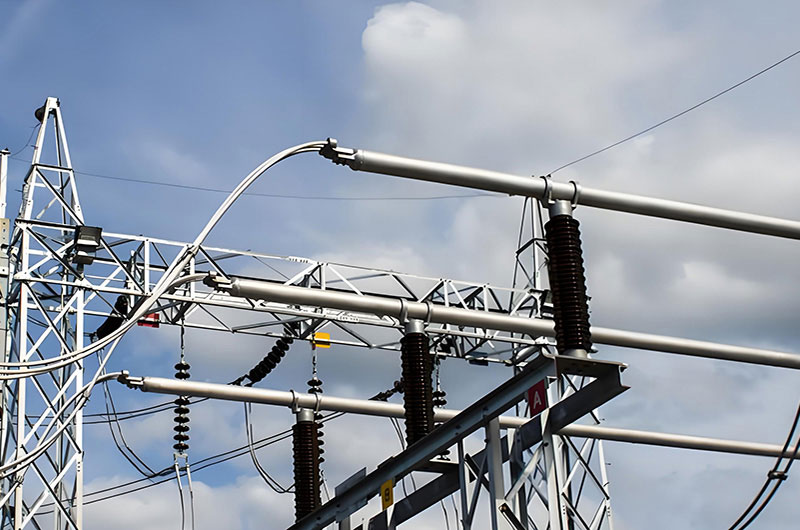
Aluminum Tubular Busbar Advantages
| Advantage | Description |
| Weight Efficiency | Aluminum Tubular Busbar is lighter than traditional solid rods or copper bars, significantly reducing the overall load of the busbar system. Due to its lighter weight, the support structure requirements during installation are also greatly reduced, lowering the cost and complexity of infrastructure construction. This makes aluminum tubular busbars an ideal choice for large power systems and industrial facilities, especially in locations where structural load reduction is needed. |
| Thermal Management | Aluminum Tubular Busbar has a larger surface area and a hollow core structure, effectively promoting heat dissipation. By increasing the surface contact area of the busbar, it can more efficiently conduct heat away, minimizing temperature rise. This excellent thermal management capability not only improves the system's stability but also helps extend the lifespan of the equipment, especially in high-load or long-duration applications. |
| Skin Effect Optimization | The tubular design of Aluminum Tubular Busbar makes the distribution of alternating current more uniform, helping to optimize the skin effect. The skin effect refers to the phenomenon where alternating current primarily flows through the surface of the conductor, and the aluminum tube's structure makes better use of this phenomenon, allowing the current to flow more efficiently along the tube wall, thus reducing energy loss and improving the overall system efficiency. This makes aluminum tubular busbars especially effective in high-frequency current transmission. |
| Mechanical Rigidity | The design of Aluminum Tubular Busbar provides excellent mechanical rigidity, able to resist sagging when installed over long spans. Even in complex installation environments such as substations or outdoor distribution systems, aluminum tubular busbars can maintain a stable shape without easily deforming or loosening. This outstanding performance makes them ideal for demanding industrial environments and buildings, especially in applications requiring long-distance power transmission. |
| Corrosion Resistance | Aluminum Tubular Busbar has a naturally occurring protective oxide layer that effectively prevents the busbar's surface from coming into contact with corrosive substances in the environment, significantly improving its durability in harsh environments. Whether in humid, chemically aggressive industrial settings or in marine climates, aluminum tubular busbars can maintain good performance and extend the service life of the equipment. |
| Cost-Effectiveness | Aluminum Tubular Busbar is generally cheaper than copper. The widespread availability of aluminum and its lower production cost make it an economically efficient solution for high-current applications. In projects where cost control is critical, aluminum tubular busbars offer a more cost-effective alternative to copper while still maintaining good conductivity and load-bearing capacity. Its cost-performance advantage makes it widely used in large power projects, industrial applications, and renewable energy fields. |
Size reference table of Aluminum Tubular Busbar
| Outer Diameter (OD) | Wall Thickness | Common Applications |
| 1 inch (25.4 mm) | 0.133 inch (3.38 mm) | Low to medium current applications |
| 1.25 inches (31.8 mm) | 0.140 inch (3.56 mm) | Medium current applications |
| 1.5 inches (38.1 mm) | 0.145 inch (3.68 mm) | Medium to high current applications |
| 2 inches (50.8 mm) | 0.154 inch (3.91 mm) | High current applications |
| 2.5 inches (63.5 mm) | 0.203 inch (5.16 mm) | High current applications |
| 3 inches (76.2 mm) | 0.216 inch (5.49 mm) | High current applications |
| 3.5 inches (88.9 mm) | 0.226 inch (5.73 mm) | High current applications |
| 4 inches (101.6 mm) | 0.237 inch (6.02 mm) | High current applications |
| 5 inches (127 mm) | 0.258 inch (6.55 mm) | Very high current applications |
| 6 inches (152.4 mm) | 0.280 inch (7.11 mm) | Very high current applications |
| 8 inches (203.2 mm) | 0.322 inch (8.18 mm) | Extremely high current applications |
These dimensions are based on Schedule 40 aluminum seamless busbar pipe specifications.
Our Aluminum Tubular Busbars come in various sizes, and we also accept custom orders. Simply send us your component specifications, and we will be happy to help turn your design into reality.
For applications requiring higher strength, such as those involving mechanical stress or high temperatures, alloys like 6061-T6 are commonly used.
When choosing tubular busbars, consider factors such as current carrying capacity, mechanical strength, environmental conditions, and compatibility with existing systems to ensure optimal performance and safety.
Aluminum Tubular Busbar Manufacturing Process
- Extrusion: Aluminum alloys are extruded into tubular profiles to ensure uniformity.
- Surface Treatment: Anodizing or applying a protective coating (e.g., epoxy paint) to improve durability.
- Connection Engineering: The ends are machined and electroplated (tin/silver) to prevent oxidation and ensure reliable connections.
Installation Considerations
- Support: Spacing should account for weight and thermal expansion.
- Environmental Protection: Choose coatings based on exposure to humidity, salt, or chemicals.
- Connection Method: Use bolted/welded joints with anti-oxidation compounds to prevent electrochemical corrosion.
Aluminum tubular busbars are a versatile solution for modern electrical systems, offering efficiency, durability, and cost savings. Their design addresses both electrical and mechanical challenges, making them the preferred choice in harsh environments.
Aluminum tubular busbars provide a reliable, efficient, and cost-effective method of power distribution, combining excellent electrical and mechanical performance with ease of installation and maintenance.

